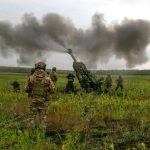1. The Israeli Defense Forces (IDF) have initiated Operation Northern Shield to identify and destroy Hezbollah cross-border tunnels in Northern Israel. At the moment, the IDF is operating exclusively on Israeli soil and has shown little intent to expand its operations across the Lebanese border. However, Jerusalem’s growing distrust of the United Nations Interim Force Lebanon (UNFIL) and the Lebanese government increases the likelihood of unilateral action on Israel’s part.
2. Operation Northern Shield takes place during a critical time for Israel. Prime Minister Netanyahu is facing criminal charges. The situation in Gaza and the West Bank remains volatile after last month’s 300-missile-salvo launched by Hamas and the Palestinian Islamic Jihad and the recent lockdown of Ramallah.
3. According to Israeli Intelligence, Hezbollah plans to capture Israel’s northern region of Galilee, by moving militiamen through the tunnels. The surprise attack will be covered by cross-border ballistic missile (BM) fire. It is virtually certain that Hezbollah has stockpiled a generous inventory of small-range BMs to use against Israel. Intelligence suggests that Hezbollah’s weapons stockpiles are concentrated in three locations around Beirut “Rafiki Hariri” International Airport.

Hezbollah Missile Sites in Beirut, Lebanon (T-Intelligence)
4. The BMs have been airlifted by the Iranian Revolutionary Guards Corps (IRGC) al-Quds Force to Syrian airfields and, more recently, directly to Beirut International Airport. The Israeli Air Forces’ (IAF) covert raids on the Iranian shipments have reduced, but not completely stopped the weapon transfers. Intelligence dating from September suggests that the latest IRGC shipments included GPS components, which can upgrade Hezbollah’s unguided rockets with precision-guided capability.
5. In Syria, Shi’a militias – including Hezbollah units – have likely reoccupied their positions near the Golan Heights, despite Russia’s guarantees that they will withdraw from the Israeli border. Iran also maintains a direct presence on the border, as IRGC advisors are embedded with key Syrian Arab Army units. Considering the IRGC’s entrenchment in Southern Syria and Iran’s longstanding investment in Hezbollah’s capabilities, there is mounting evidence of a bigger play against Israel.
6. We assess that Israel acted in response to the following threat scenario:
- Assault: Hezbollah will aim to infiltrate Northern Israel under BM fire cover and capture the extremities of Panhandle Galilee on the north-south axis, isolating the Golan Heights from the west through blitz light-infantry tactics. In parallel, the IRGC and affiliated Shi’a militias positioned in Quneitra and Suweida (Syria) will initiate cross-border attrition attacks on the Golan Heights from the east. Hezbollah’s special forces unit will spearhead the assault, accompanied by sniper teams and anti-tank units tasked with harassing IDF troop reinforcements. We judge that the assault phase depends heavily on a small initial IDF presence in the North due to urgent threats in Gaza and the West Bank – a situation developing at the moment.
- Tactics & Objectives: The campaign is estimated to be IRGC-advised and conducted asymmetrically in Hezbollah-trademark fashion. The attacking forces will aim to deliver a sustained harassment and maximum pressure campaign, based on the lessons learned in Syria. The conflict will inevitably attract a large number of Shiite fighters from across the Middle East and the “Shi’a Crescent” corridor will be key for the attacking forces’ combat mobility and logistical operations. While it is unlikely that Hezbollah and other IRGC-backed elements will be able to capture Galilee and the Golan Heights, militiamen will seek to entrench themselves in the area and establish staging points for continuous attacks on Israeli troops. Hezbollah will capitalize the infiltration for propaganda and eventually press for political negotiations to legitimize its revisionist claims.

Hypothetical Operational Layout of the Hezbollah Assault (T-Intelligence assessment and visual)
7. Our threat scenario is based on the following capabilities and trend indicators:
- All three cross-border tunnels identified thus far are located in the Galilee Panhandle. The tunnels sit in key tactical positions on the borderline. A topographic study of the area shows that the tunnels run through the Lebanese mountain valleys that can be used to cut the Panhandle off along the Hula and the Upper Jordan river valleys near the Golan plateau.
- The Sochi Accord enabled the IRGC-backed Shiite militias to re-deploy part of their forces from Idlib and reinforce their positions at the Syrian border.
- Recent escalations in Gaza and the West Bank (Ramallah) have forced the IDF to divert its capabilities to the South.
- IRGC cargo airlifts, presumed to carry BMs and other weapons, have recently been rerouted from Syrian airfields to Beirut International Airport.
- The number of United States Special Operations flights to Lebanon has grown over the past months. We assess that U.S. intelligence, working in close cooperation with Israel, is aware of Hezbollah’s intensified operational readiness in Lebanon. (MAGMA13 and 14 flights fly-in from al-Udeid, Qatar and Jordan)

High interest flights outbound of Lebanon [SAMPLE] courtesy of @CivMilAir
- The number of IAF flights over Lebanon has recently increased, likely for intelligence, surveillance and reconnaissance purposes.
8. While we are confident that Iran’s success in the Syrian Civil War will translate in ambitious (covert) operations against Israel, we cannot assess whether an Hezbollah operation was imminent. Israel likely decided to act preemptively and, in the process, to test international reactions.
9. Hezbollah denies the Israeli claims. Both the U.N. mission and the Lebanese government have refused to attribute the cross-border tunnels to the Lebanese group. UNFIL authorities are liaising with both the IDF and Lebanese Armed Forces (LAF) and have hosted a tripartite meeting in order to guarantee transparency.
10. IDF engineers and bomb disposal units have identified and destroyed three 200-meter long tunnels that stretched 35-37 m inside Israeli territory. The IDF placed a camera inside the first tunnel and caught two individuals on tape. One of them was identified as Dr. Imad “Azaladin” Fahs, a commander of the local Hezbollah unit. Hezbollah has denied the allegation and claimed that the men in the video were drug dealers. The IDF fired on another Hezbollah unit that attempted to recon the IDF’s presence in the Kadesh valelly.
We surprised this Hezbollah operative before he could surprise Israeli civilians. Take a look at what we caught on camera from inside an attack tunnel dug from Lebanon into Israel. #NorthernShield pic.twitter.com/CFXl33hx7i
— Israel Defense Forces (@IDF) December 4, 2018
11. Israeli officials seem to put little faith in the LAF’s commitment and capacity to counter Hezbollah. UNFIL has also been largely unsuccessful in identifying and preventing Hezbollah’s activities in southern Lebanon. The growing frustration and distrust between the parties will increase the likelihood of further unilateral action on Israel’s part.
UPDATE – February 21, 2019
12. Israel announced the completion of Operation Northern Shield on January 13, 2019. Overall, the IDF has exposed and destroyed six cross-border tunnels. The last three tunnels (discovered on December 15, December 29, and January 12) were dug from the Ramyeh-Ayta al-Shab areas in southwestern Lebanon. In order to relieve the pressure on the vulnerable Galilee Pandhandle area, IDF engineers erected fences in the Adaisseh region. The Meir Amit Intelligence and Terrorism Information Center reports that the Hezbollah leadership, including its leader Hassan Nasrallah, have thus far preserved media silence and made almost no reference to the events.
by HARM and Gecko
Founder of T-Intelligence. OSINT analyst & instructor, with experience in defense intelligence (private sector), armed conflicts, and geopolitical flashpoints.






Pingback: Israel uncovers 4th Hezbollah attack tunnel
Pingback: Israel uncovers 4th Hezbollah attack tunnel - Novus Vero